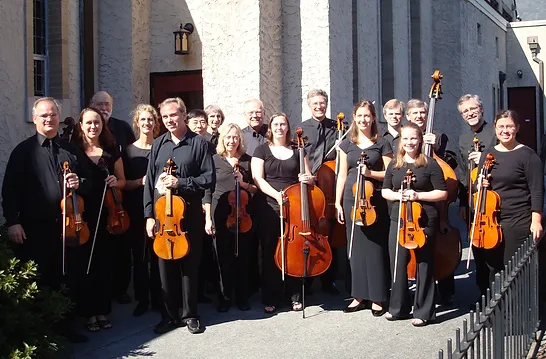STRING ORCHESTRA
Dust from Other Lives (7/1/20) for string orchestra – 6’15”. The idea for the title comes from a recent Saharan dust cloud that arrived here in Florida from the African coast. It was a symbol to me of the troubles of recent times. These include the corona virus pandemic, disrupted economies, and protests over racial inequality, that, in turn, suggested the following narrative. Imagine a life that is running smoothly, not without trouble but with the security that problems can be met. This is the opening andante section with its running sixteenth notes and simple, cheerful melodies. Then, the pandemic and the disruptions that followed arrives – the adagio section. It is characterized by somber melodies and dissonant harmonies. After that, a return to normal is not quite possible. Although the opening material returns, it is at a slower pace (Poco più mosso) and is interrupted by echoes of the adagio. The dust from other lives has changed us, possibly forever. MIDI recording.
The Call of the Dance (1/18/20) for string orchestra – 11’45”. An Urge to Move, including the slow section, is based on a head motif consisting of an arpeggiated descending triad followed by an upward leap of a ninth. The motif suggests preparation (triad) and execution (ninth) of a bold action, such as the leap of a ballet dancer, the speed and airtime of a long jumper, the arc of a dunk by a basketball player, or the frolicking of a child doing a cartwheel. As the title suggests, the movement is a celebration of the human desire to create motion in any form. Twisting Waltz develops the formal aspects of dance. Although the harmonic language wanders, the sectional form is predictable and comforting. Its lyricism and tunefulness stand in contrast to the outer movements. Tribal Frenzy draws on the effects of group action. Whether one is gathered to watch basketball in a large sports venue, is part of a political rally, or is part of an actual tribe, the collection of individuals intensifies the emotional content of the moment. The outcome, musically, is an unsettled wildness of layered rhythms. MIDI recording.
Aragon, Keeper of Heritage (3/30/18) for string orchestra – 6’00”. Aragon is a landlocked region of Spain with a climate that varies from permanent glaciers in the Pyrenees, to green valleys with rich pasture lands and orchards, to the arid plains of the central lowlands. It has a rich and varied history that includes Pre-Roman, Celtic, Roman, and Islamic periods, and Frankish control that eventually led to the independent Kingdom of Aragon. It remained an independent part of Spain with its own laws and government until 1707, when, following the War of Spanish Succession, it fell under national rule. Today, the region is an autonomous community in Spain, maintaining much of the culture of its past. MIDI recording.
Hear the Heartbeats (6/9/14) for string orchestra – 9’15”. To understand this work, imagine a lifetime. It begins with the beating of a heart in the womb. In childhood, there is the energy and promise of good things to come. This is tempered over time by the realities of education and the necessities of living. Then comes love in the form of a waltz and a time of passion. The birth of children sounds the return of rapid heartbeats. As life closes, thought of death and judgement (the Dies Irae) occur. However, the human spirit remains strong, and the memories of a good life bring the work to the end. MIDI recording.
Mediterranean Delight (12/19/13) for string orchestra – 11’00”. The work evokes an easy, Latin lifestyle. The first movement, Sunshine and Sparkling Seas, is roughly ternary in form, with the middle section featuring imitation that begins with the double basses. The second movement begins with an ostinato rhythm in the lower strings. Above this, an extended and somewhat dissonant melody evolves. A middle section with relaxed rhythmic activity begins with a cello melody that eventually climbs through the strings to the first violins, after which, the opening melody returns. The third movement, Festival, is based on a dance-like rhythm consisting of an eighth note, two sixteenths and two eighths. MIDI recording.

The Tallis Chamber Orchestra
Subtle Symmetries (2010) for string orchestra, premiered by the Tallis Chamber Orchestra, September 17, 2011 – 10’00”. The work is in two movements. The overall form of the first movement is an arch with coda – A (pyramids), B (main theme), C (secondary theme), B (main theme), A (pyramids), Coda (based on the main theme). Symmetries of sorts are achieved in the rising and falling of the pyramids of sound, in the canon, and in the rising and falling of the secondary theme. The second movement, Asymmetric Subtleties, explores asymmetry through the use of changing meters and ostinato.
Live performance. The work was premiered by the Tallis Chamber Orchestra on October 2, 2011, in Wilmington, NC.